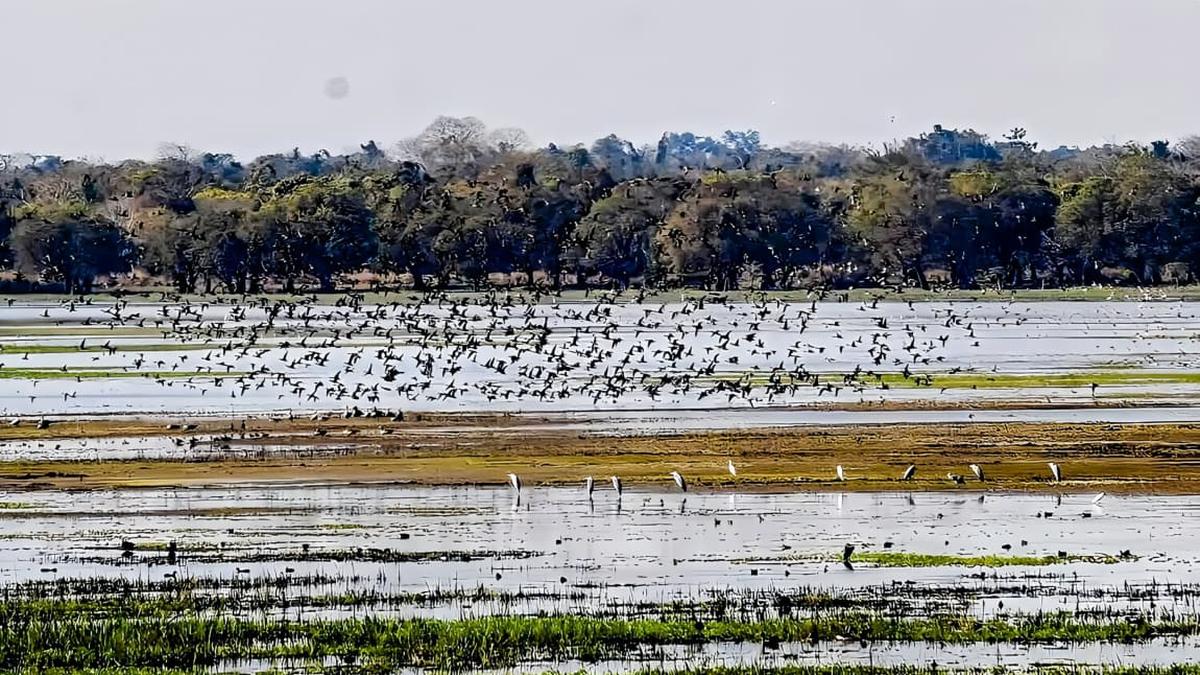Copyright thehindu

Conservationists, wildlife officials, academics, and students have got together to push for the Ramsar site tag for two interconnected wetlands in central Assam’s Nagaon district. The Rowmari-Donduwa wetland complex is within the 70.13 sq. km Laokhowa Wildlife Sanctuary, which is a part of the Kaziranga Tiger Reserve. This complex has been recording more birds than the only two Ramsar sites in the northeast – Assam’s Deepor Beel and Manipur’s Loktak Lake. A Ramsar site is a wetland designated as one of international importance under the Ramsar Convention, an intergovernmental treaty signed in Ramsar, Iran in 1971. “Laokhowa and the adjoining Burhachapori Wildlife Sanctuaries function as connectivity corridors for wild animals migrating between the Kaziranga Tiger Reserve and Orang National Park (Kaziranga-Orang landscape),” said Sonali Ghosh, the Field Director of Kaziranga National Park and Tiger Reserve. She said that civil society organisations and students from colleges in the vicinity have been researching and monitoring the wetland complex. She said that their efforts have yielded vital data on avian species and the floodplain-marsh ecosystem of the two wetlands, which cover an area of approximately 3 sq. km. An average of 120 species of resident and migratory birds, including globally threatened species such as the knob-billed duck, black-necked stork, and the ferruginous pochard, have been recorded in the wetland complex annually. According to the 6th Kaziranga Waterbird Census conducted a few months ago, 20,653 birds of 75 species were recorded at the Rowmari Beel, and 26,480 birds of 88 species were counted at Donduwa Beel. The combined total exceeds the counts at Deepor Beel and Loktak Lake, officials said. “The outstanding avian assemblage at the Rowmari-Donduwa complex, coupled with its rich habitat diversity and ecological connectivity, makes the wetlands an ideal candidate for designation under the Ramsar Convention,” said Smarajit Ojah, the officer on Special Duty for Assam’s Directorate of Higher Education, after a conservation workshop organised in Nagaon recently. The workshop, organised by the Centre for Sustainable Development, Nowgong Girls’ College, and the Kaziranga Tiger Reserve, focused on strategies to conserve the Laokhowa wetlands. Dilwar Hussain of the Laokhowa-Burhachapori Wildlife Conservation Society cited ecological vulnerability and the need for habitat restoration as the reasons why the Rowmari-Donduwa complex deserves to be a Ramsar site. “Assam has more than 3,000 wetlands, but none has earned the Ramsar site tag since Deepor Beel in 2002,” he said. India hosts 93 Ramsar Sites spanning 13.6 lakh hectares, making it one of the leading Asian countries in wetland conservation. These sites encompass diverse ecosystems that support rich biodiversity and provide crucial ecosystem services such as flood control, groundwater recharge, and wildlife habitat protection. Tamil Nadu leads all Indian states with 20 Ramsar sites, followed by Uttar Pradesh with 10. Assam Forest Department officials stated that a proposal has been submitted to pursue the elevation of the Rowmari-Donduwa wetland complex, once threatened by encroachment and illegal fishing, to a Ramsar Site.



